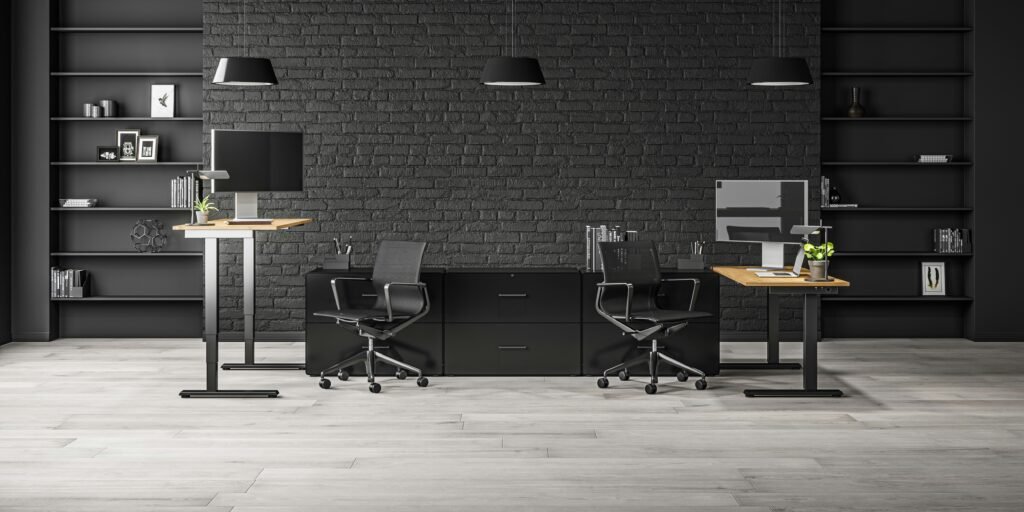
The Importance of Ergonomic Furniture
Ergonomic furniture has become an essential ally for all those who spend long hours sitting, whether in the office or teleworking. Choosing chairs and desks designed to provide comfort and support can make a huge difference to the health of our backs. By implementing these solutions, we not only improve our posture but also increase our productivity.
Ergonomic Chairs: A Necessary Investment
Ergonomic chairs are undoubtedly a key component of a healthy workspace. These chairs are designed with specific features, such as adjustable lumbar support, adjustable heights, and armrests. These features help maintain proper posture, which reduces back and neck strain. Purchasing an ergonomic chair isn’t just a purchase; it’s an investment in your daily well-being.
Desks and Accessories that Make a Difference
In addition to chairs, adjustable desks have become popular among those who work long hours. These desks allow you to alternate between sitting and standing, which promotes better circulation and reduces the risk of postural problems. Additionally, complementing your furniture with accessories such as footrests or monitor stands can further optimize your workspace.
In short, by choosing ergonomic furniture, you are taking a crucial step toward a healthier and more efficient workday. Prioritize your comfort and health with a careful selection of chairs, desks, and accessories that enhance your work experience.
To help you take the first steps toward an ergonomic setup, here are some practical furniture recommendations that can transform your workspace:
1. Choose a Chair with Lumbar Support
Look for chairs that offer adjustable lumbar support to help maintain the natural curve of your spine. Features like height adjustability and cushioned armrests are essential for keeping your posture aligned, and your body relaxed throughout the day.
2. Invest in a Height-Adjustable Desk
A sit-stand desk allows you to alternate between sitting and standing, reducing fatigue and improving circulation. This flexibility encourages movement and helps prevent stiffness caused by remaining in one position too long.
3. Use a Monitor Stand or Arm
Your screen should be at eye level to avoid bending your neck forward. A monitor riser or an adjustable arm can bring the screen to the proper height, reducing neck and shoulder strain.
4. Optimize Keyboard and Mouse Position
Make sure your keyboard and mouse are placed at a height that allows your elbows to stay close to your body at a 90-degree angle. Ergonomic keyboards and mouse pads with wrist support can help avoid repetitive strain injuries.
5. Add a Footrest if Needed
If your feet don’t naturally rest flat on the floor, a footrest can provide the support you need to keep your legs in a comfortable position, improving your posture and circulation.

In summary
Creating an ergonomic workspace is not just about aesthetics—it’s a powerful way to care for your physical health and boost your productivity. Whether you’re working from home or in an office, small adjustments with the right furniture can lead to long-term benefits. Take care of your body, and your performance will follow.
When designing your workspace, it’s important to remember that ergonomic furniture is not a luxury—it’s a necessity. The right setup can prevent common issues such as lower back pain, neck stiffness, and even repetitive strain injuries.
Whether you’re working from home or at the office, investing in ergonomic office chairs, height-adjustable desks, and accessories like keyboard trays or wrist supports can significantly enhance your comfort and efficiency.
An ergonomic workspace not only improves posture but also supports mental focus and energy throughout the day. Take the time to assess your current setup and make small changes that lead to long-term wellness.
Other Recommendations
According to the Mayo Clinic, proper office ergonomics play a crucial role in preventing long-term strain.
The Occupational Safety and Health Administration (OSHA) provides detailed ergonomic guidelines for computer users.












